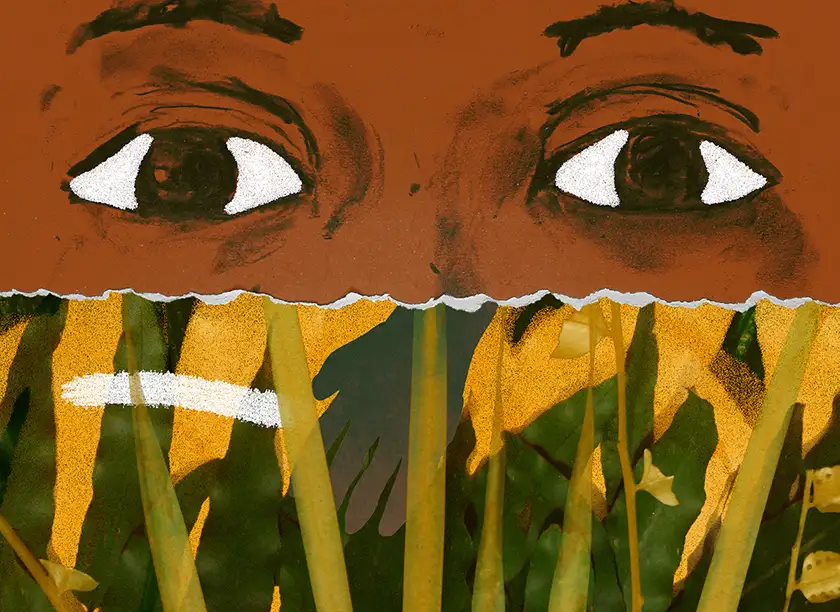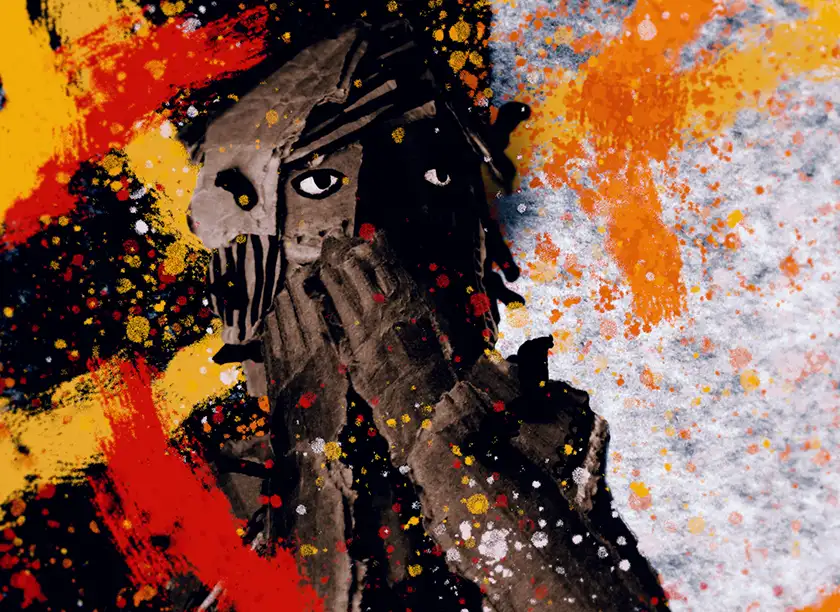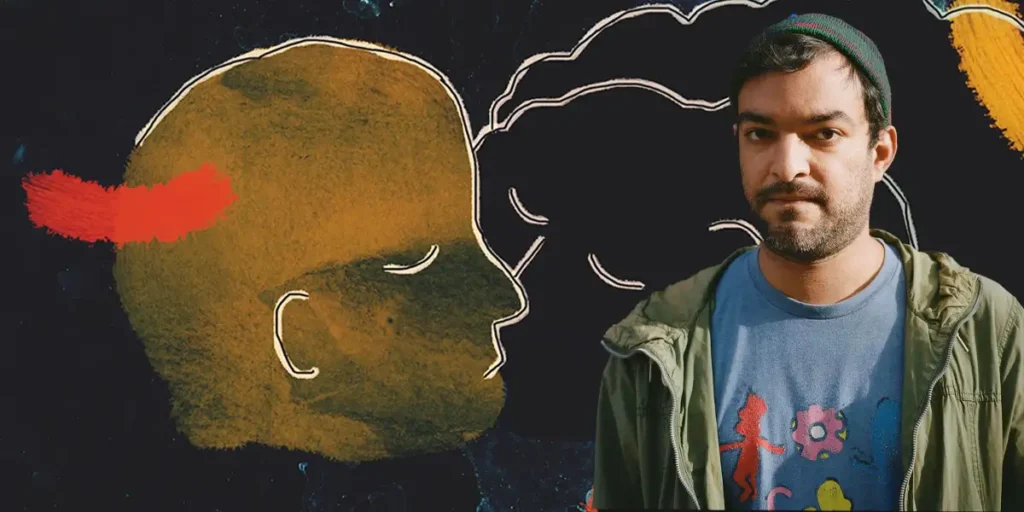We sat down for an interview with director/writer Tomás Pichardo Espaillat to discuss his first feature film, Olivia & the Clouds, a wonderful, wildly inventive animation about memories.
Olivia & the Clouds is a film ten years in the making. It draws on a wide berth of different animators from the Dominican Republic and their various talents. Animator and filmmaker Tomás Pichardo Espaillat merges all of these varying animation techniques and styles into a film that is thrillingly chaotic but simultaneously cohesive.
Structured in an experimental and freewheeling form, Olivia & the Clouds hops between the present and the past with glee. Olivia (Olga Valdez & Elsa Nuñéz) and Ramon (Héctor Aníbal) enjoyed a relationship years ago, and via the Rashomon effect, Pichardo Espaillat spotlights the pair’s different interpretations and memories of their experiences together, whilst also looking at Olivia’s son’s own turbulent relationship in the present. Olivia struggles to get over Ramon, so much so that she keeps his ghost under her bed, whilst in Ramon’s own memories, Olivia takes the form of a small plant which sprouts more and more leaves.
Olivia & the Clouds is endlessly fascinating and inventive, forming into something random and ambiguous as opposed to formulaic in order to represent how humans handle memories in both positive and negative ways.
Olivia & the Clouds had its world premiere at the 77th Locarno Film Festival, before playing to audiences at the BFI London Film Festival in October 2024. We sat down with Pichardo Espaillat for an interview about his enigmatic feature debut, where the ideas formed for the film, how he mixed its various elements together, how the Dominican Republic was captured so vibrantly, and more.
Mixing and Collaborating: How Olivia & the Clouds was Created
Thank you for talking to me today. I saw Olivia & the Clouds last week at the BFI London Film Festival and adored it. It is a film with such a unique style. When did the idea for this film first form in your mind?
Tomás Pichardo Espaillat: The film took ten years to make, but the ideas came from different sources and places. First, it was a mixture of several short film ideas that started mixing with each other.
The very first moment that was part of the character, Olivia, was something I saw a long time ago as a student in 2006. There was a restaurant with a piano, and I went there with some friends, one of whom played the piano. One friend was dating someone a bit older—they had a lot of fights. She went ahead of me to the restaurant, a couple of minutes before me, and she saw her boyfriend with someone else. After that, she started running whilst I was still heading to the restaurant. She passed me and when I looked back at her, I saw that image from Olivia & the Clouds of Olivia running with the mountains behind her. I extracted that from that person.
I had that image in my head, and modeled the physical elements of Olivia after her. From there, all the other elements started mixing together.

There are a lot of people in the credits of Olivia & the Clouds. What was the process like working with them? Did they input different elements for the film?
TPE: In the Dominican Republic, the animation culture is quite limited. The industry is very small. When I started Olivia & the Clouds, there weren’t a lot of animators, although there are more now. At that time, I wanted the crew to be local.
I started teaching at a film school and a former student came onto the project. I realised all of the animators had different animation backgrounds, with different ways of working, so we couldn’t make a cohesive animation in that sense. In order to do that, I would have to hire people from other countries that are prepared for that. I thought to myself, the film has these different points of views and characters, so I could play around with that idea in the visuals. All these people could bring their own styles and ways of working.
It really works and merges together so well. Was it a challenge mixing all of these mixed media and animation styles together?
TPE: No, because I’ve worked like that in the past. For different places, I’ve made various short films with new and different techniques. I was learning how to process all of that.
For Olivia & the Clouds, I used the model of giving one sequence to one person, and another to someone else, and so on. In many ways, I was treating the animators like actors and performers. In some cases, I would just give them the storyboard or script, and tell them that this is what they’d have to ‘perform’. In others, I would say a feeling or an expression to some people who I knew could do that.
For example, for the ‘bachata’ sequence, where they all dance at the club, there were six animators working on that scene. I asked them not to look at what each other was doing so they could just play around with the general idea of the scene. With all this material, I assumed the role of a sculptor!
I loved the sound design in Olivia & the Clouds. For example, you can hear the teeth chattering in Ramon’s apartment when Olivia first appears.
TPE: Yes, that was the same actress [Olga Valdez] who voices Olivia. We put her in a booth and we asked to do all kinds of sounds! For example, what does Ramon’s work sound like? What does Barbara’s typewriter sound like? She was making random noises.
The music and the voices for the whole film was very important to me. I wanted to portray the chaotic, noisy nature of Santo Domingo. The composer [Cem Misirlioglu] is Turkish. We’ve been working together for a while, and I asked him to visit the Dominican Republic for two weeks to do some research. We visited the countryside where he could listen to the river. We went to the market, so he could absorb those sounds.
Capturing the Country: Tomás Pichardo Espaillat on Portraying the Dominican Republic
I loved the way you capture the Dominican Republic on a handheld camera, and then add different colours to the scenes, such as on people’s faces or the outlines of their bodies. What was your thinking behind this?
Tomás Pichardo Espaillat: In the past, I’d done that before. Before becoming an animator, I had the idea of making live action films, before my life moved more into animation. There were projects where I was mixing filming with animation, so I wanted to mix those elements.
I also wanted to add footage of the countryside, where I used to visit as a child. The market in Olivia & the Clouds is very near to my house, it’s very chaotic, and I wanted to incorporate that place into the film. I knew I would use rotoscoping for these scenes with animation on top, and it also worked perfectly because we filmed in late 2021 when people were still wearing masks. By covering these masks up, we made the film timeless in that sense, as you couldn’t tell it was during COVID.
Moods and Memories: Tomás Pichardo Espaillat on the Emotions of Olivia & the Clouds
How did you use different animation techniques to portray the moods and emotions in Olivia & the Clouds?
Tomás Pichardo Espaillat: It was mostly intuitive. I was trying to understand what each moment needed. For example, when Olivia is in the countryside, the camera moves a lot and it is very expressive, whilst the styles change frequently too. I liked that as a personality for her character. The world became what she was thinking. For the older version of Olivia, the images were more fragmented, to reflect her old age and how she behaves now.
The various viewpoints of Olivia & the Clouds are fascinating. You use the Rashomon effect to tell this story. Where did that idea come from?
TPE: It came from two places. Firstly, from two different short films that I realised were part of the same story from different angles. Secondly, from the way we behave with different people, like with our parents or friends. WIth them, I’m the same person, but different elements of my personality might change. Also, I’m interested by how we interpret memories and how this can differ from each person. We can experience the same moment, but it can be viewed very differently. That concept from Rashomon (1950) was really inspiring and interesting.
I loved that Ramon remembered Olivia as a plant. At first, she’s small, then she grows in his apartment. What was your intention behind this?
TPE: The idea came from a lot of different places. Before writing the script, I was living in New York, creating stories with someone else. Some elements kept repeating themselves, such as the ghosts of the past or people as plants. While I was writing the script, I was also dating a person who’s family owned a plant shop! She gave me the painting of the two giraffes in Olivia & the Clouds.

Tomás Pichardo Espaillat on the Inspirations Behind Olivia & the Clouds
Did you draw on any inspirations for Olivia & the Clouds?
Tomás Pichardo Espaillat: Yes, from Ingmar Bergman, from his films Wild Strawberries (1957) and Scenes from a Marriage (1974). In the latter, there is a scene towards the end of the film and in the TV series, where a character says something along the lines of, “In school, we learn Maths, we learn HIstory, we learn all this kind of stuff, but we don’t learn how to love or connect with each other. We leave school as emotional illiterates.” That expression really stuck in my mind. How do we connect with each other?
There is also an animation called La casa lobo (The Wolf House), that uses a lot of hand drawn and handmade techniques. It’s very beautiful.
In terms of other places, I took inspiration from novels, such as those by Haruki Murakami. I love the magical realism in those books. Every time I read them my head explodes.
Thank you for speaking to us today.
This interview was edited for length and clarity.
Olivia & the Clouds was screened at the BFI London Film Festival on October 17-19, 2024.

